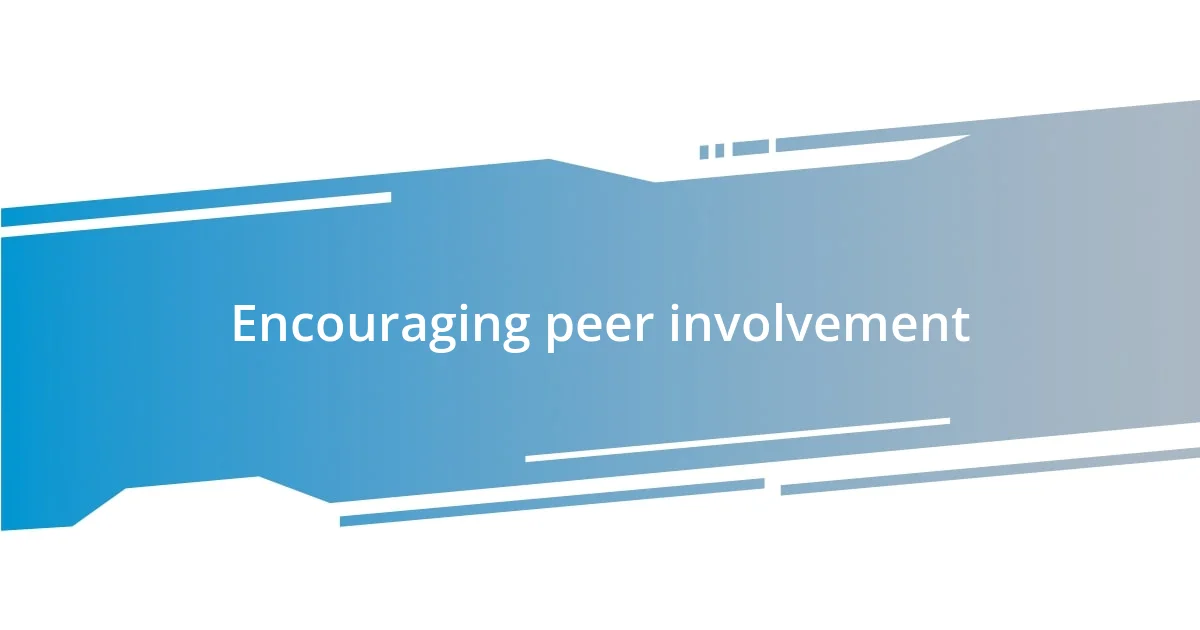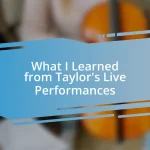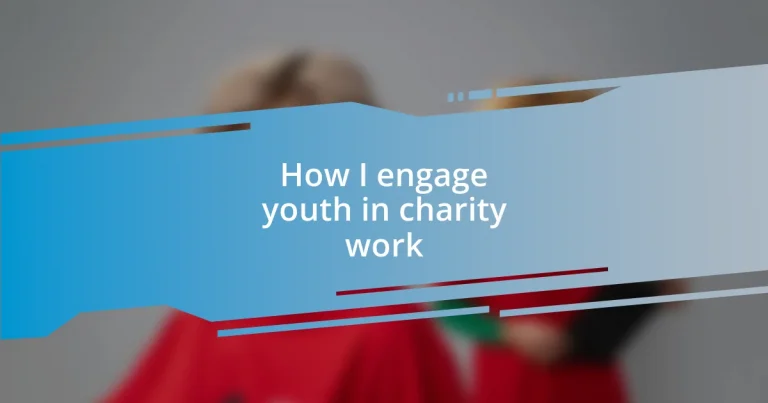Key takeaways:
- Engaging youth in charity work requires understanding their passions and leveraging social media to boost participation and visibility.
- Building meaningful connections through personal storytelling, collaboration, and peer recognition fosters a sense of community and commitment among young volunteers.
- Implementing feedback mechanisms and involving youth in decision-making sustains long-term engagement and reinforces their connection to the causes they support.

Understanding youth interests
Understanding youth interests is essential when trying to engage them in charity work. I remember a time when I volunteered with a group of teenagers who were passionate about animal welfare. They weren’t just there to fulfill a requirement; their genuine love for animals ignited a spark that made the entire experience rewarding for everyone involved. What if we tapped into those passions more broadly?
It’s fascinating to see how youth today are driven by their interests, whether it’s environmental sustainability, social justice, or health and wellness. I once spoke with a young volunteer who felt strongly about climate change. Connecting her concern to local charity initiatives made her involvement feel personal, reinforcing the idea that her actions could lead to real change. Isn’t it amazing how aligning passions with purpose can evoke deeper commitment?
Moreover, understanding social media’s role in shaping their interests cannot be overlooked. Youth are constantly inspired by content they see online, from activists championing causes to influencers promoting charitable initiatives. I’ve found that when I use platforms they relate to, it boosts engagement significantly. Don’t you think harnessing these digital conversations could further motivate young people to participate in charity work?

Building meaningful connections
Building meaningful connections is crucial in the realm of youth engagement in charity work. When I organized a community clean-up day, the teens I worked with shared stories about their favorite parks and the memories tied to them. These personal narratives transformed the event into more than just a task; each participant felt an emotional tie to the place they were helping. That connection wasn’t just about cleaning—it became a shared mission, something that truly brought us together.
To foster these connections, consider the following approaches:
– Share Personal Stories: Encourage youth to share what drives their passion for the cause.
– Create Collaborative Projects: Allow them to brainstorm and develop project ideas that resonate with their interests.
– Host Informal Meetups: Organize events that promote conversation and relationship-building among participants.
– Encourage Peer Recognition: Creating a platform for recognizing each other’s contributions helps solidify ties within the group.
– Connect with Local Legends: Involve community heroes whose journeys inspire youth, making the cause more relatable.
By implementing these strategies, I’ve seen how creating an inclusive and personal environment not only engages but empowers young people to turn their enthusiasm into significant charitable action.

Creating engaging charity projects
Creating engaging charity projects is all about tapping into the unique interests and motivations of young people. I remember when our group decided to host a charity bake sale. Instead of just asking for baked goods, we turned it into a friendly competition, where everyone could showcase their favorite recipes. The excitement was palpable, and watching the youth bond over their culinary creations added an element of fun that made them feel personally invested in the cause.
Another effective strategy is to incorporate elements of gamification. I once introduced a point system for volunteering hours, where participants could earn badges for different levels of commitment. This not only made the experience more appealing but also fostered a bit of friendly rivalry among the participants. They would excitedly share their progress on social media, which brought more visibility to our cause and encouraged even more young people to join. Wouldn’t it be great if every volunteer opportunity felt like a rewarding adventure?
Lastly, connecting initiatives to larger causes resonates deeply with many young people. For instance, when we organized a clothing drive, we didn’t just see it as an act of donation; we linked it to a broader conversation about poverty in our community. The participants were encouraged to think about who would benefit from their efforts, which sparked meaningful discussions. I found that when the youth can see the tangible impact of their contributions, their engagement skyrockets.
| Charity Project Approach | Benefits |
|---|---|
| Friendly Competitions | Encourages creativity and bonding |
| Gamification Techniques | Increases engagement and visibility |
| Connecting to Larger Causes | Drives deeper understanding and impact |

Utilizing social media platforms
Utilizing social media platforms can be a game changer when it comes to engaging youth in charity work. One time, I decided to launch a campaign on Instagram for a local shelter. I created a series of eye-catching posts that shared impactful statistics about homelessness in our community. The likes, shares, and comments started pouring in, and I was amazed at how quickly the community rallied around the cause, largely driven by the digital buzz. Isn’t it incredible how a simple post can spark awareness and action?
I also found that interactive content, like polls or Q&A sessions, really resonates with young people. During one campaign, I hosted a live session where we discussed the charity’s mission, answered questions, and even brainstormed future projects together. The energy was electric! Youth love to feel heard and involved, and using social media gives them a platform to express themselves. What if we encouraged them to suggest their own charity initiatives in these discussions?
Another great strategy is to showcase real-time impacts through social media updates. During our fundraising efforts, I shared live updates of how much we raised and the difference it was making. One moment that stood out was when I posted a video of our team delivering supplies to those in need. The reactions were heartwarming, and I could feel the pride radiating from the young volunteers. They realized their efforts were not just numbers; they had real, tangible effects on the lives of others. How rewarding is that?

Encouraging peer involvement
To encourage peer involvement, I often find that sharing personal stories can have a profound impact. For example, I once brought a group of friends to a community garden project where we not only dug in the dirt but also shared our aspirations for making a difference together. It was incredible to see how opening up about our motivations inspired others to jump in with their own ideas. This genuine exchange created a dynamic where everyone felt comfortable contributing, fostering a sense of camaraderie that made the experience memorable.
Furthermore, creating opportunities for teamwork can really amplify youth engagement. I remember during a charity walkathon, we organized participants into small teams, encouraging them to brainstorm creative ways to fundraise collectively. It sparked enthusiasm, and I was amazed at the innovative ideas they came up with, like themed costumes and social media challenges. Watching them work together not only built friendships but also reinforced their shared purpose. Don’t you think collaboration brings out the best in people?
Another technique I’ve found effective is highlighting peer recognition. On one occasion, we implemented a “spotlight” moment at our events to celebrate individuals or teams who had made outstanding contributions. The cheers and applause that followed were electrifying! Knowing that their efforts would be recognized not only motivated participants but also encouraged others to put forth their best work. How important is it for young people to feel valued and acknowledged in their involvement? I believe it matters immensely and can transform mere participation into heartfelt commitment.

Measuring impact and feedback
Having a clear way to measure impact and gather feedback is essential for any charity work involving youth. I recall organizing a volunteer day at a food bank, where we took a moment to sit down afterward and reflect as a group. We used sticky notes to capture what we thought went well and what we could improve. It’s a simple idea, but the thoughts shared during that debrief really illuminated how every individual had their own unique perspective on the experience. Isn’t it fascinating how these candid reflections can lead to enhanced future projects?
Another method I’ve used is to send out brief surveys or questionnaires after events. There was a particular fundraiser where participants could express what moved them most and how they envision their roles in future initiatives. The responses not only provided me with valuable insights but also demonstrated how engaged they were with the cause. I remember a young volunteer shared how their personal connection to food insecurity made a lasting impression on them. How powerful is it to see that our efforts resonate on such a personal level?
When we present the data we gather, I believe it’s crucial to share it back with the youth involved. After a community clean-up, I compiled the before-and-after photos and statistics about the area’s improvement. When I showed them the transformations, their faces lit up with pride. They realized they had contributed to something meaningful. Isn’t it uplifting to see the tangible results of our collective efforts? Keeping the conversation going with regular feedback loops not only builds trust but also cultivates a deeper investment in future initiatives.

Sustaining long-term engagement
Sustaining long-term engagement is all about making youth feel a genuine connection with the causes they support. I recall one memorable project where we developed a mentorship program, pairing experienced volunteers with newer participants. Watching these relationships unfold brought such joy—it’s like seeing a plant grow! The mentors shared stories about their journeys while navigating challenges, which planted seeds of inspiration in the younger ones. This deep connection turned routine volunteering into a thriving community tapestry, where everyone felt an integral part of the mission.
Another approach I’ve seen create lasting commitment is involving youth in the decision-making process. One time, we held a brainstorming session about upcoming initiatives and actively sought their input. Their eyes sparkled when they realized their ideas would shape our next steps. It’s remarkable how inclusive practices can shift their sense of ownership and responsibility. Can you feel that energy when young people play a pivotal role? It’s contagious, sparking enthusiasm that often transforms into continued participation beyond a single event.
Consistent follow-ups have proven vital for keeping young volunteers engaged over time. After a holiday fundraiser, I made it a point to check in with everyone through a casual group chat, sharing highlights and future plans. One participant, who initially felt shy, opened up about how loved ones had inspired their charitable values. Hearing those heartfelt stories made everyone feel truly connected, solidifying a sense of community. Have you ever experienced that magic after a simple follow-up—how it can inspire an ongoing dialogue? Trust me; it’s what keeps the flame of engagement alive, fostering loyalty that stretches well into the future.














